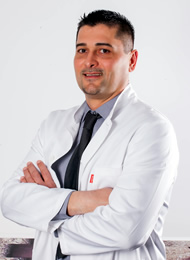The leading application in this area which is intended for the needs of health tourism in the field of 14 medical activities. Each implementation of this program is tailored to the needs of your clinic, polyclinic and the needs of your staff.
WHY NAME OF PROGRAM IS SCHEDULER?
In computing, scheduling is the action of assigning resources to perform tasks. The resources may be processors, network links or expansion cards. The tasks may be threads, processes or data flows.
The scheduling activity is carried out by a process called scheduler. Schedulers are often designed so as to keep all computer resources busy (as in load balancing), allow multiple users to share system resources effectively, or to achieve a target quality-of-service.
Scheduling is fundamental to computation itself, and an intrinsic part of the execution model of a computer system; the concept of scheduling makes it possible to have computer multitasking with a single central processing unit (CPU).
A scheduler may aim at one or more goals, for example:
- maximizing throughput (the total amount of work completed per time unit);
- minimizing wait time (time from work becoming ready until the first point it begins execution);
- minimizing latency or response time (time from work becoming ready until it is finished in case of batch activity, or until the system responds and hands the first output to the user in case of interactive activity);
- maximizing fairness (equal CPU time to each process, or more generally appropriate times according to the priority and workload of each process).
In practice, these goals often conflict (e.g. throughput versus latency), thus a scheduler will implement a suitable compromise. Preference is measured by any one of the concerns mentioned above, depending upon the user’s needs and objectives.
In real-time environments, such as embedded systems for automatic control in industry (for example robotics), the scheduler also must ensure that processes can meet deadlines; this is crucial for keeping the system stable. Scheduled tasks can also be distributed to remote devices across a network and managed through an administrative back end.
The process scheduler is a part of the operating system that decides which process runs at a certain point in time. It usually has the ability to pause a running process, move it to the back of the running queue and start a new process; such a scheduler is known as a preemptive scheduler, otherwise it is a cooperative scheduler.
We distinguish between “long-term scheduling“, “medium-term scheduling“, and “short-term scheduling” based on how often decisions must be made
Another component that is involved in the CPU-scheduling function is the dispatcher, which is the module that gives control of the CPU to the process selected by the short-term scheduler. It receives control in kernel mode as the result of an interrupt or system call. The functions of a dispatcher involve the following:
- Context switches, in which the dispatcher saves the state (also known as context) of the process or thread that was previously running; the dispatcher then loads the initial or previously saved state of the new process.
- Switching to user mode.
- Jumping to the proper location in the user program to restart that program indicated by its new state.
The dispatcher should be as fast as possible, since it is invoked during every process switch. During the context switches, the processor is virtually idle for a fraction of time, thus unnecessary context switches should be avoided. The time it takes for the dispatcher to stop one process and start another is known as the dispatch latency.
TESTIMONIALS
For years, we have been looking for and testing various programs that would meet the needs of the work of our polyclinic, given that we are a clinic that deals with dental tourism, and we have various organizational protocols regarding the arrival of our patients from abroad, as well as organizing and monitoring the work of all our employees, files , billing and everything else that requires the complex work of a serious clinic.
We finally found it in the Scheduler program. The construction of the program at the start already had everything necessary for the work of a clinic like ours, and with the phenomenal cooperation with Mr. Ibro Fazlić, the program was brought to the point where every item is fully adapted to the functioning of our clinic. An exceptionally professional program, which satisfies absolutely all spheres of functioning of a modern dental clinic, and the knowledge and expertise of Mr. Fazlic, have led to the fact that today we have a top program that covers all spheres of our work. We also have an exceptional support program creator who listens to our needs and, in accordance with the changes that occur in our work for the sake of the market and the needs of our users, quickly and efficiently solves all problems and introduces all the changes necessary for the smooth operation of our clinic.
Ivica Dubravica dr.med.dent.
Direktor Poliklinike Dubravica d.o.o.

Aditional description about this program you can see in PROSPECTUS

